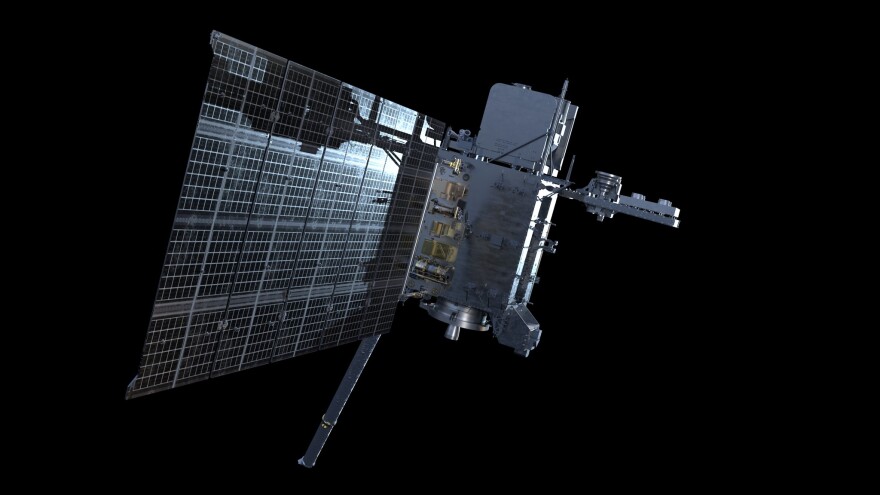Surrounded by towering anvil clouds and percolating summer storms off in the distance, the GOES-U satellite, the fourth and final member of National Oceanic and Atmospheric Administration's (NOAA) GOES-R series, successfully launched from the Kennedy Space Center late Tuesday afternoon.
The GOES-U caught a ride aboard the SpaceX Falcon Heavy rocket from Launch Complex 39A in Cape Canaveral. The satellite is part of an $11 billion upgrade to the nation's forecasting infrastructure.

It’s equipped with six state-of-the-art instruments, including a powerful camera that will provide near real-time high-resolution imagery.
National Weather Service director Ken Graham says this satellite will replace an older model to provide continuous observations from the "GOES-East" location through the 2030s.

According to NOAA, the GOES-U will provide a constant real-time view of weather and dangerous environmental phenomena across the Western Hemisphere. Satellites in such "geosynchronous" orbits appear to hang stationary in the sky, allowing uninterrupted views of the Earth.
GOES-19 will watch over a big portion of the Western Hemisphere with its five science instruments.
After extensive tests and checkout, and if all goes according to plan, GOES U will be in geostationary orbit 22,236 miles above Earth. At that point, the satellite will be renamed GOES-19.
It will also play a large role in monitoring and studying space weather using its new compact chronograph instrument (CCOR-1).
The CCOR will study the sun’s geomagnetic storms. These storms can cause massive problems on Earth if not accurately forecasted, or with enough lead time to help warn big problems in communications and ultimately the economy, therefore scientists are more determined to study them and predict them more accurately.
Graham says this instrument alone will have major impacts on the forecasts.
The GOES-19 will eventually have an uninterrupted view stretching from the west coast of Africa to central North America. Another GOES satellite monitors the Pacific Ocean and the western U.S., Canada and Central America.
Tuesday's launch is part of a five-decade long partnership between NOAA and NASA that involves the operation of more than 60 satellites that provide data to help with weather forecasting, climate studies and storm prediction.
GOES-19 will serve as the primary satellite for looking at the central United States, places like "Tornado Alley," or really any severe storms throughout the continental U.S. The GOES-U will have the ability to see lightning from supercells and get that lightning warning out to the public.
The lifetime of the current GOES-R series will extend into the 2030s. Until its successor, the Geostationary Extended Observations (GeoXO) satellite system, which is set to launch in 2032.



